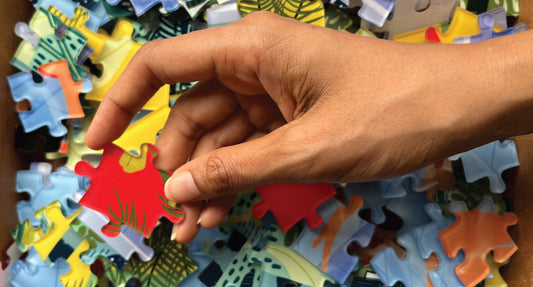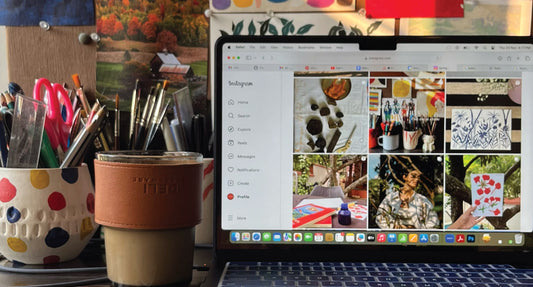“You remember too much,” My mother said to me recently, “Why hold on to all that?” And I said, “Where can I put it down?”
Remnants of memories are the parts of memories that are left behind, the traces we cannot erase, and the parts that somehow live with us in ways we do not comprehend.
Some of these remnants are tangible, objects that lay hidden in plain sight, and some of these are intangible, stirred by music, sunsets, smells, and winds.
I collect and I hold on to memories, and when they are difficult to contain, I try to capture them – through photographs and words. Most of our memories are an amalgamation of fact and fiction.
Memories visited multiple times often start softening in our minds. It is odd how faces, solid and visible as they are, evaporate, while words, made of breath, stay. The most mundane conversations in a particular tone stand out. Such as the cheerful voice in all its inquisitive glory of my lovely Thai flatmate, who asked me question after question about my life in India, continues to linger in my head, even today, years later.
The memory associated with material objects, though, works in mysterious ways. Simply put, these objects serve as a catalyst, a trigger for remembering a past that you can otherwise never truly revisit.
Over the past month, I consciously photographed a few objects that I stumbled upon, which made me revisit memories from within my archives - some were cherished, some were simply acknowledged. These are just a few drops from the ocean that thrives within.
**
Recently, I found this Polaroid in the small inner pocket of my tote bag (one that I hadn’t used since the pandemic started). This picture was clicked on a particularly gorgeous (orange) sunset by the beach. Staring at the Polaroid, I smile. I can barely recall much from the evening, but I can vividly recall the crashing waves, the salty wind and the intertwined fingers.

Every time I catch a glimpse of the book on the Partition of India on my bookshelf, I pause. With all the traces of Punjabi, Urdu and Hindi words in it, I travel back to the wintery month of December when a friend once told me how traumatic the memories of partition were for his Nana, who was a refugee from Rawalpindi. What I felt then was fairly similar to what I felt when I read the book– a certain sadness in my heart, that doesn’t really belong to me.

Once a year, usually around Diwali, when all nooks and corners of the house are dusted, I peer through old photo albums. In those, I found a photograph of a three-month-old Krupa with her paternal and maternal grandparents, the only one that I have with all four of them together. Only my gorgeous Nani survives as of today and I now look at this photograph with a sudden possessiveness that I didn’t have earlier!

When she discovered that I was learning how to embroider, Nani brought along a fully hand-embroidered sari on her next visit to Mumbai. She wanted to show me her handiwork, a sari that she had hand-embroidered over the span of two weeks, four decades ago. I caressed the folds of the sari, a surprisingly ordinary piece of clothing that now was an heirloom in my eyes. I have carefully wrapped and put it away in my cupboard, hoping for a day when I might wear it.

Browsing through my bookshelf, I randomly picked up this particular book which had this stamp on the first page. I had the widest smile on my face. It took me back to the midnight of my 24th birthday when a friend gifted me this amazing customized stamp. Over the next three days, I had stamped every single book I owned with it. The best birthday present I have ever received.

I finally opened a cardboard box I had brought back when I returned from Oxford. I had carefully stored a brilliantly red maple leaf in it. Fall of 2019, I witnessed a maple tree in all its glory for the first time and I carefully plucked a leaf and walked back to my apartment, caressing the leaf all along. Opening the box, and holding the leaf in tropical Mumbai, made me feel displaced. But for the maple leaf on the other hand it felt like an appropriate homecoming to a place it had never been to before.

In The Farthest Field: An Indian History of the Second World War, Raghu Karnad writes that people have two deaths: the first at the end of their lives, and the second at the end of the memory of their lives when all those who remember them are gone.
On the other hand, objects, the physical holders of our memories – survive, in many ways ‘forever immortalized’.
This intrinsic behaviour of remembering too much and holding on to too much is perhaps a reason why since childhood, I have been giving personal postcards, drawings and notes to friends, on various occasions. And it warms my heart when years later, they tell me exactly where they have kept the keepsake and how well it has been cherished and preserved. These postcards, drawings and notes are in many ways remnants of my own memories that survive.
**
So, what truly is a memory, I wonder?
Memory is the saving grace of our past.
Thus, I close my eyes and I travel back. Every single day I plunge into the heart of my memories. Har Roz, back to a time, a person, a place, as if it was still here or I was there. **
That’s all for this one.
Lastly, write to me! You're welcome to share any particular memories or remnants of the same, with me in any medium you are comfortable with – visual and/or textual. And I shall share a few of these replies in the next newsletter, so we can all revel in some of our archived memories (anonymously).
Feel free to share. I look forward to them :) 🌺
As always a song recommendation – Merry Christmas Mr Lawrence by Ryuichi Sakamoto. This particular classic triggers in me a sense of longing for something, I know not what, but it is beautiful nonetheless.
Besides, I find the terribly sad song, Kalle Kalle – utterly delightful! It was only recently that I understood my contradictory emotions with it. A friend had once patiently translated the first few lines from Punjabi to English for me. Perhaps why I found it comforting as opposed to upsetting. Perhaps!
And last of all, enjoy a few favourites from my gallery!

I have continued my ink painting practise and I love drawing couples. This particular scene was inspired by the 1993 Vietnamese movie – The scent of green papaya.

I read the book - Purple Hibiscus by Chimamanda Adichie and have since been on the lookout for a purple hibiscus. And recently, a dear friend shared a picture of a bloomed purple hibiscus with me. Ahh, how serendipitous!

My friend who is a brilliant make-up artist recently tested all her glittery eye shadow palettes on my arm! Bhagwaan Yaar.

Attended my childhood friend’s engagement. An evening full of love, laughter, dance and food!
Sending love, a warm cup of chai and remnants of memories that make you smile,
Krupa 🌺




